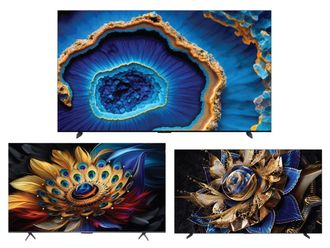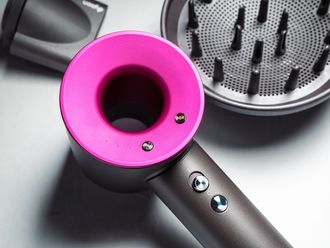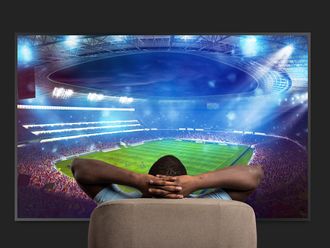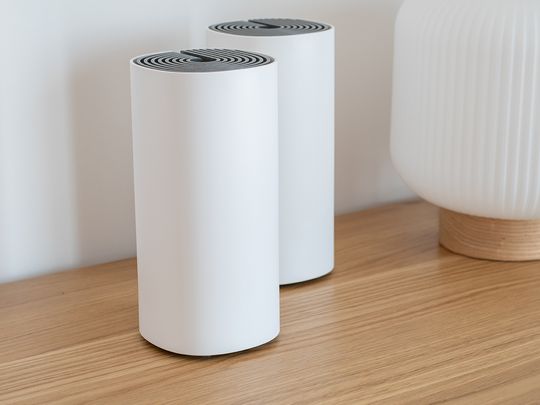
Robust internet connectivity throughout your home, with a strong signal no matter which corner of the apartment or villa you’re standing in – that’s the dream. And it’s achievable through a mesh Wi-Fi network system.
With many of our homes now equipped with smart technology, like smart doorbells, locks, lights or thermostats, and with increased loads from video streaming and gaming, a smooth Wi-Fi performance is more important than ever before.
While you could use a single router to set up Wi-Fi connectivity, a mesh system combines the main router with one or more nodes, creating a unified network. This way, your devices automatically connect to the nearest option to get the best speeds.
We spoke with Junaid Ahmad, senior product manager at the Dubai-based IT distribution company Newcom (@newcommea on Instagram), who has 16 years of experience in the industry. He advised us on the best mesh networks to buy, how to use them at their optimal efficiency, and which kinds of households benefit most from them. Scroll below to read what he said.
Pick up your favourite device with Amazon Prime and get it delivered to you with free, same-day or next-day delivery. Check out discounts on electronics, too.
1. Best Overall: TP-Link Deco M9 Plus (Pack of 3)
Pros
- Easy to set up and use
- Dedicated backhaul band
- Built-in malware and antivirus protection
- Alexa and IFTTT compatible
- Good parental controls
Cons
- No support for Z-Wave certified devices
As Ahmad’s top recommendation, TP-Link’s Deco M9 Plus is ideal if you live in a large home with an outdoor space that you frequently use. He said: “TP-Link’s Deco M9 Plus is a tri-band mesh Wi-Fi system that covers several square feet with strong signals and can simultaneously handle 100 devices connected to it. It also has IoT (Internet of Things) integration to fit into users who have already taken the smart home route.” This pack of three delivers reliable internet connectivity to an area of up to 6,500 square feet. It acts as a smart home hub, so you can set up interactions between ZigBee, Bluetooth and Wi-Fi devices and control all your smart appliances and devices. Three separate Wi-Fi bands deliver fast, stable connections, with speeds of over 1,000Mbps. An ethernet cable is included. Over 14,000 Amazon reviewers rate this device with 4.5 stars, saying they enjoy seamless connectivity both indoors and outdoors. The only thing missing, reviewers say, is support for Z-Wave devices, which may limit your control of certain smart gadgets.
Bonus: Buy with zero per cent installments and pay Dh111.20 for 12 months with select banks.
Warranty: Amazon offers one-year extended warranty by Salama Care for Dh86, and two-year extended warranty for Dh141.
2. Best Expandable System: NETGEAR Orbi Tri-Band RBK752 Mesh System
Pros
- Fast tri-band system
- Connects over 40 devices
- Plenty of Ethernet ports
Cons
- Security and parental controls are paid services
If you’re looking for an expandable system, opt for NETGEAR’s Orbi RBK752. This pack of two provides coverage for up to 5,000 square feet and up to 40 devices. But you can extend coverage up to 2,500 square feet with each additional satellite, sold separately. The mesh system offers plenty of connectivity options, with three Gigabit Ethernet ports on the router and two ports on the satellite. It offers connectivity to over 40 devices, and lets you stream 4K or even 8K UHD movies on multiple devices, with no issues. Reviewers say it’s easy to install and manage, but complain that they had to pay extra for the device’s security system, NETGEAR Armour, and smart parental controls.
Bonus: Buy with zero per cent installments and pay Dh106.17 for 12 months with select banks.
Warranty: The manufacturer provides one-year limited hardware warranty. Amazon offers one-year extended warranty by Salama Care for Dh74, and two-year extended warranty for Dh122.
3. Best for Multiple Devices: TP-Link Deco X20
Pros
- Compact router and satellites
- Excellent range
- WAP3 security
- Connects over 150 devices
Cons
- Lacks a dedicated backchannel for data
Another great option by TP-Link, the Deco X20 offers 1,201Mbps speeds on its 5GHz band, and 574Mbps speeds on its 2.4Ghz band, totalling up to 1,800Mbps. Its seamless coverage and strong signal, generated by Wi-Fi 6, is especially suited to office buildings and households in which people connect multiple devices. Ahmad said: “The Deco X20 seems to be a great option for more high-end office installations as it features Wi-Fi 6, WPA3 encryption and the ability to handle over 150 connected devices at once.” This pack of three can cover up to 5,800 square feet, creating a unified network that offers ultra-low latency for responsive gaming and video streaming, and a reliable connection. Reviewers say the internet speed is stable and as strong as if it were connected via an Ethernet line, in their multi-level homes. The only downside is that it doesn’t have a second 5GHz backhaul channel for sending data from the satellites to the host.
Bonus: Buy with zero per cent installments and pay Dh60.72 for 12 months with select banks.
Warranty: Amazon offers one-year extended warranty by Salama Care for Dh46, and two-year extended warranty for Dh75.
4. Best for Gaming: Asus ROG Rapture GT6
Pros
- Excellent wall penetration
- Built-in security software
- Great Wi-Fi 6 performance
- Advanced security protocols
Cons
- No 6GHz band
A mesh router that’s specifically designed for gamers, the Asus ROG Rapture GT6 pushes its Wi-Fi 6 capabilities to the limit. Available in a two-pack, each device comes with nine powerful internal antennas, and Asus’ RangeBoost Plus technology, so it can cover up to 5,800 square feet with a strong, reliable Wi-Fi signal. This tri-band gaming mesh system has a dedicated high-performance 5.9GHz band, which brings a third, clear 160MHz channel that offer extremely fast speeds of up to 10,000Mbps. Alongside the standard WPA3 security protocol, the GT6 also features AiProtection Pro, along with advanced parental controls and other tools. Reviewers say they’re able to utilise their full WAN bandwidth with this capable mesh Wi-Fi system, and love that the router is built to stand out, and not be hidden away, with its trapezoidal shape and a logo that lights up in different colours and patterns. However, don’t expect it to be able to tap into Wi-Fi 6E’s 6GHz data band for peak performance.
Bonus: Buy with zero per cent installments and pay Dh134.93 for 12 months with select banks.
Warranty: Amazon offers one-year extended warranty by Salama Care for Dh97, and two-year extended warranty for Dh160.
5. Best Budget: Amazon eero 6 Dual-Band Mesh Router
Pros
- Good performance
- Easy to install
- Built-in Zigbee for pairing devices
- Compact device
Cons
- Only one spare Ethernet jack
- Speeds drop sometimes, say reviewers
Eero 6 is one of the most affordable mesh routers out there, and it offers full support for Wi-Fi 6 while giving you the option of adding more satellites at your convenience. The router covers a range of 1,507 square feet and offers speeds of up to 900Mbps. Reviewers say the eero app takes them through installation easily, while the built-in Zigbee smart hub seamlessly connects compatible devices on the network with Alexa. However, do note that since this is a dual-band and not a tri-band mesh system, its band-steering algorithms, which are designed to automatically move you between 2.4GHz and 5GHz bands, sometimes fail, bringing the speed down by as much as 80 per cent. Still, it offers good value for money, if you live in an apartment or are part of a small family and are just looking for a steady connection in all regions of your home.
What makes a mesh Wi-Fi system different from a regular router?
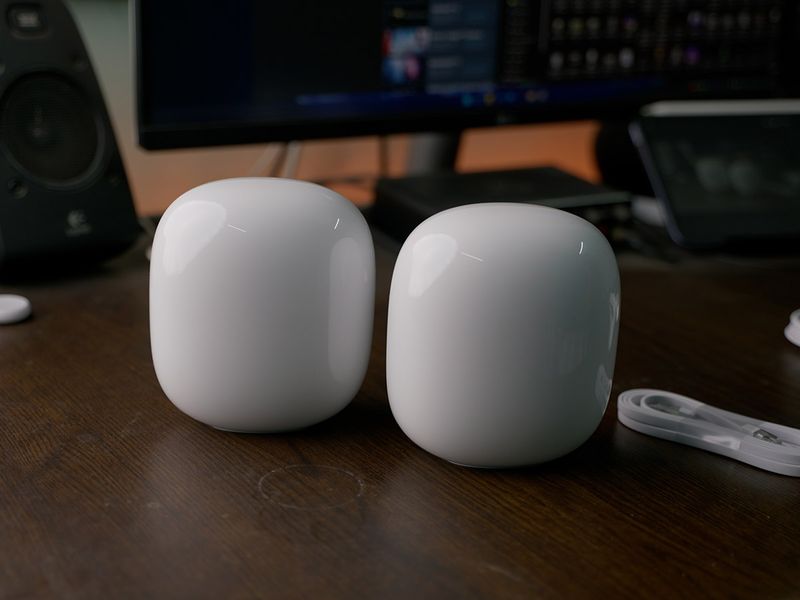
If you use a single router, you might be wondering whether it’s worth replacing it with a mesh network system. Ahmad decodes its functionality for us: “A mesh Wi-Fi system’s primary differentiating factor is its wider range of coverage, along with reliability and intuitiveness. A traditional Wi-Fi router’s coverage is only as strong as the coverage of the single router, expandable only via Wi-Fi range extenders; that introduces a set of hassles. A mesh Wi-Fi system’s coverage is based on how many nodes it has and how wide the coverage of each node is.”
According to our expert, mesh systems are “the only truly viable and intuitive way to have a reliable Wi-Fi signal in large areas; whether it be covering an entire office building with many nodes, or covering a large house or villa with two or three nodes”.
Even if you have strategically placed Wi-Fi signal extenders or repeaters around your home, you would need to switch networks to take advantage of them, says Ahmad. This is unproductive and unintuitive. Mesh systems, on the other hand, all project the same Wi-Fi signal, so switching to one node or the other occurs without any prompting from the user. Everything is done automatically, so you don’t have to lift a finger, which is why it makes for such a user-friendly and intuitive system.
Who would benefit from a mesh Wi-Fi network system?
According to Ahmad, there are two scenarios in which mesh systems are well-suited. First, large offices or office buildings, where people always need to be connected to the network as they move between rooms or even floors.
Second, large homes, especially those with outdoor spaces, could benefit from mesh systems. Ahmad said: “In the case of larger houses and particularly ones with multiple stories, weak Wi-Fi signal has always been an issue and using extenders and repeaters is simply not a great option. Sometimes one’s phone/laptop stays connected to a weaker Wi-Fi signal and doesn’t change to the repeater/extender even when the speed drops to annoyingly low levels, at which point, one may be forced to manually switch signals.”
This problem is eradicated with mesh Wi-Fi, says Ahmad: “With its multiple node structure, devices automatically switch to the closest node with the strongest signal without one even noticing, because it is still connected to the same Wi-Fi network.”
What features should I look out for?
When buying a mesh Wi-Fi system, there are several aspects you can keep an eye out for, to ensure you’re picking up the device that’s best suited to your home and household usage patterns.
Ahmad said: “The first specification buyers should look out for is the coverage area of each node; this is the specification that can tell the user whether or not it’s a good option for the area that they are trying to cover. The Wi-Fi standard is also becoming more and more important as more devices are now supporting Wi-Fi 6 speeds, so users will want to make sure that they are future-proofing their equipment.”
It's also worth checking if the set-up is expandable. Ahmad explains: “[Check] whether the network can accept future nodes not included in the box as expansions, or is it locked to a certain number of nodes. Having wired backhaul may also come in handy for some as it allows the nodes to be connected via wires to provide a more consistently high-speed internet across the coverage area.”
Lastly, security features, smart home integration options, and the inclusion of Ethernet ports may also be high on the list of priorities for certain users.
Our recommendations are independently chosen by Gulf News editors. If you decide to shop through links on our website, we may earn an affiliate commission, as we are part of Amazon Services LLC Associates Program.


